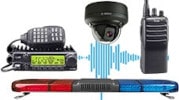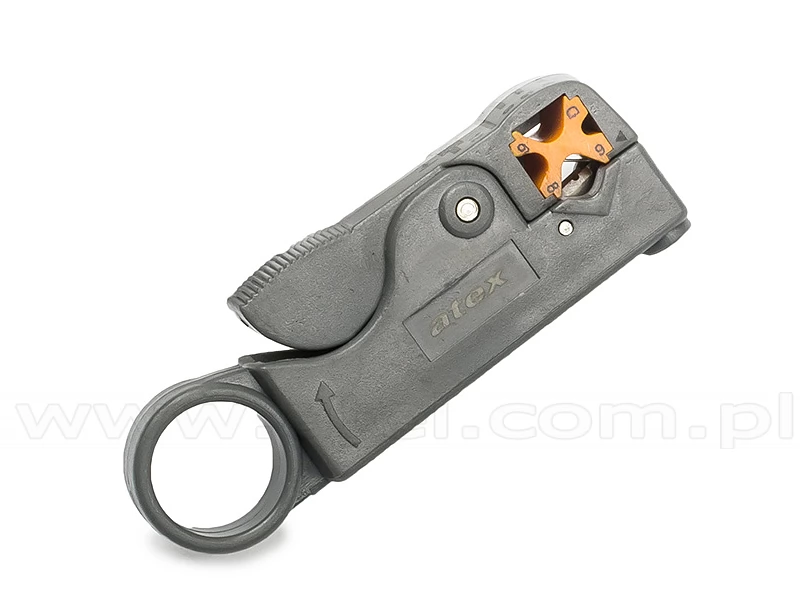- Special Offers
- Transceiver Radio
- Transceiver Accessory
- Antennas
- Antenna Accessory
- Cable
- Connector
- Installation Material
- Installation Tools
- Crimping and Blanking Plier
- Cable Stripper
- Cutting-plier
- Tool Kit
- Cable Extension and Distribution Set
- Soldering Station
- Measuring Equipement
- Body Worn Camera
- Electrosmog
- Telephone
- Baby Monitor
- Fever Thermometer
- Radio Device
- Set-top Boxes
- Personal Protective Equipment
- Motorcycle Helmet Speaker
- Car Equipment
- Voltage Converter
- Dry Cell
- Battery
- Battery Charger
- Emergency Signal
- Amber Signal
- Sound Signal
- Light and Sound Signal Accessory
- Traffic Engineering
- LED Lamp
- Smart Home
- Mosquito Repellent Device
- Market - Other Products
- Discontinued Products
Pre-order (0)
Cable Stripper
The cable stripper is the perfect tool for professionally removing the outer sheathing and insulation of cables. This tool allows you to work quickly and accurately and achieve results that cannot be achieved with any other tool. Anyone who likes DIY, plumbing or construction knows how difficult it is to remove insulation, especially when you have to do it standing on a ladder. The thin diameter of the cables makes removing the outer sheathing or insulation a real hassle. If you only have a conventional knife and a pair of classic pliers to hand, stripping several cables can turn into a never-ending process. Read more...
Pre-order (0)
• For coax connectors
• Suitable for: RG-58 BNC plugs
• Can be used with RG-59, RG-6 cables after calibration thanks to the adjustable insert
Why it's important to use a cable stripper or cable stripper when making cables
Cables are constructed in such a way that they have one or more metallic fibres inside. This can mean a thicker solid wire or many thin twisted wires inside. These strands are surrounded by a plastic insulating sheath and in some cases even a shielding mesh. In order to connect this cable to certain appliances, a connector must be placed at the end.
In order to do this, we need to remove the insulating layer from the end of the cable and attach the connector, or as others call it the end or plug. This is exactly what we call blanching. But we have to make sure that all layers remain intact during the process.
What are the criteria for choosing the right cable stripper for the job?
As noted above, the use of cable strippers or blanks makes working with wires much easier. But with these purpose-built tools, not only is the process much more professional, but it also saves time and a lot of frustration. Because they allow you to work very precisely and it's important not to damage the wire or cable when stripping the cable.
But why the plural? Because you should use different blanks for different cables! For example, this type of pliers should first be adjusted to the size of the cable, rotated around the cable and then used to cut through the insulation. The plastic covering can then be easily peeled off the cable. But using this tool in a narrow distribution cabinet, for example, is not the most convenient. There are also adjustable blanching knives, but you can also find tools for fixed, standard-sized cables and wires.
What to know about automatic cable strippers
The larger blanks are often referred to as automatic cable strippers. The device's automatic reading system adjusts the clamp to the size of the cable, a very handy feature. These types of pliers automatically adjust the blades to the thickness of the cable and then safely and accurately remove the insulation. Automatic wire strippers are therefore often referred to as self-adjusting wire strippers.
These modern tools are made for a specific type of cable, which can be flat, cylindrical, single or multi-wire versions, and can safely strip all cables within a certain size range without adjustment.This is particularly important when working with different thicknesses of wire, otherwise you will have to readjust the tool again and again. With this tool there is no need to adjust the depth of cut. The automatic cable stripper has interchangeable blades.
What is the difference between a cable stripper and a crimping pliers?
Some cable strippers are similar to crimping pliers. However, they are fundamentally different in functionality and do not belong to the same category. Crimping pliers are used to make a connection between two different parts, i.e. they perform the same function as, for example, a soldering iron. Remember, this tool is not suitable for stripping cables and wires.
What size cable stripper to choose?
Cable strippers with 180 mm handles are the most common, but these tools are available in different sizes. In addition, sizes of 160 mm or 210 mm are also commonly in circulation. If you have a particularly large hand, the 210 mm model is the right choice for you, and for smaller hands the 160 mm is a good choice. But you can also choose the cable stripper according to the type of coax cable you want to use it with. Choose a tool that has an adjustable insert so that the tool can be used for RG-59, RG-6 cables after calibration.
In DND Telecom Center's web store, you can choose from a range of compatible cable strippers, from those for RG-59 cable to RG-6 cable, depending on your needs. Check out our selection!


